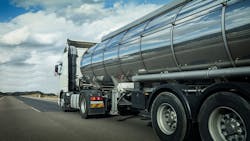2026 Freight Guide for Oil and Gas: Trends, Risks, and Strategy
Key Highlights
Blended procurement strategies improve cost control and responsiveness through lanes and spot buys.
Truckload trends signal shifts in intermodal, LTL, and air freight amid port congestion.
Hybrid inventory models use regional hubs and digital tools to boost agility and reduce risk.
Tariff changes and regulations drive urgent sourcing and increased reliance on air freight.
Market overview
2026 will not be a “status quo” year for freight. Volatility driven by tariffs, regulatory shifts, and seasonal disruptions will demand agile logistics strategies. For oil and gas shippers, who often manage complex, multimodal supply chains, this means rethinking procurement, mode selection, and inventory positioning.
Procurement strategy: Flexibility over rigidity
Oil and gas supply chains must avoid blanket contracts that limit responsiveness. Instead, they should adopt blended procurement strategies like:
- Contracting core lanes to ensure reliability for critical shipments.
- Reserving capacity for opportunistic spot buys where rates soften.
- Aligning RFPs with rate cycles—not fixed calendars—to optimize cost and service.
This approach is especially vital for upstream and midstream operations where timing and cost fluctuations can impact project margins.
Modal dynamics: Truckload as the bellwether
The truckload market remains the key indicator for broader freight trends. As capacity tightens:
- Intermodal rates will adjust to stay competitive.
- LTL volumes will rise as small shipments shift modes.
- Port congestion and reduced vessel efficiency may push high-priority freight to air transport.
For oil and gas, where equipment and materials often move across long distances and through ports, monitoring truckload trends is essential to anticipate ripple effects across other modes.
Inventory strategy: From “just in case” to hybrid models
The pandemic-era stockpiling is giving way to hybrid inventory models that include:
- Positioning goods closer to demand centers to reduce carrying costs.
- Using regional distribution and cross-border diversification to mitigate bottlenecks.
- Applying network modeling or digital twin testing to evaluate trade-offs in sourcing, placement, and transport cost.
This is particularly relevant for downstream operations and field services where responsiveness and cost control are critical.
Oil and gas-specific considerations
- Tariff volatility may affect import flows of specialized equipment and materials. Stay alert to policy changes that could impact sourcing.
- Air freight may become a strategic lever for urgent shipments, especially in remote or offshore locations.
- LTL and intermodal shifts could affect the availability and pricing of carriers servicing energy corridors.
Action plan for 2026
- Monitor truckload trends to anticipate modal shifts.
- Diversify procurement to balance cost and agility.
- Reassess inventory placement using modeling tools.
- Stay informed on trade policy and regulatory changes.
- Prepare for mode migration—freight will seek the best treatment across networks.

